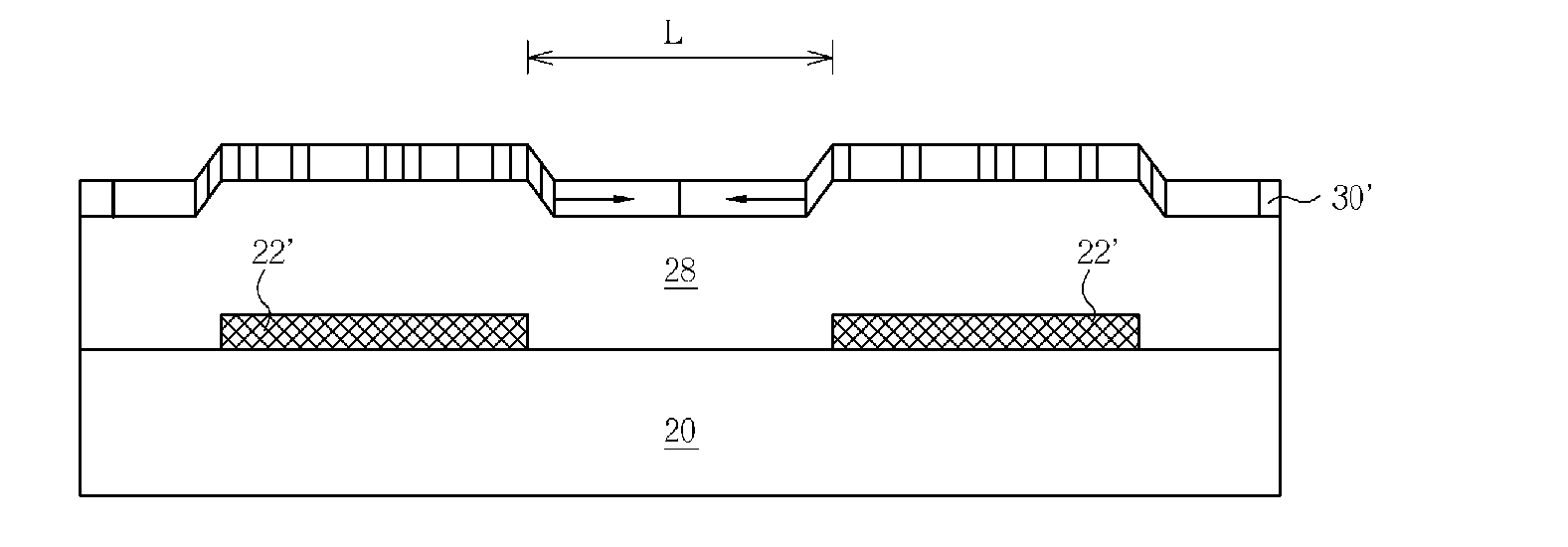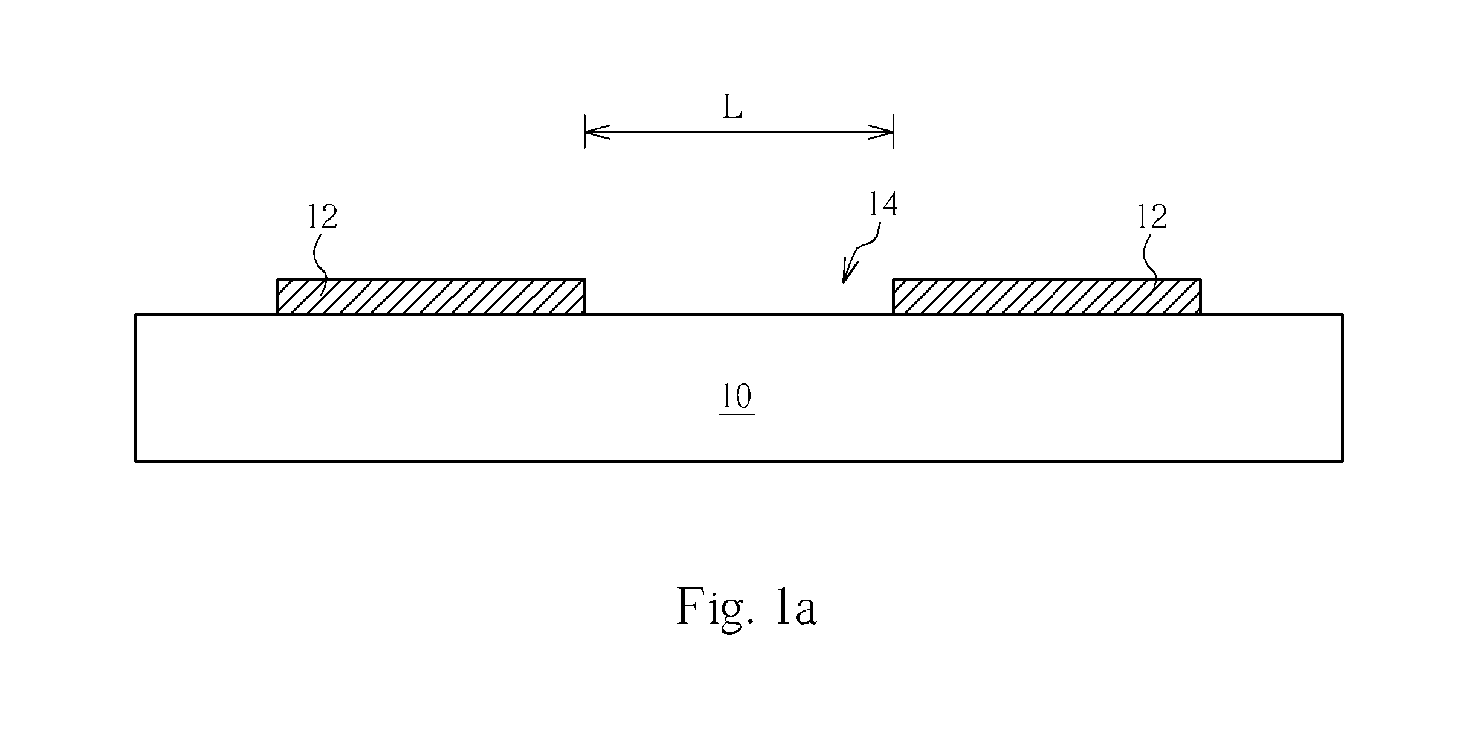Semiconductor device and method of fabricating a low temperature poly-silicon layer
a low temperature polysilicon and semiconductor technology, applied in semiconductor devices, semiconductor/solid-state device details, electrical apparatus, etc., can solve the problems of grain growth direction that cannot be efficiently controlled, glass substrate deformation, difficulty in etching, etc., to promote the lateral growth of grains, the effect of high practicality
- Summary
- Abstract
- Description
- Claims
- Application Information
AI Technical Summary
Benefits of technology
Problems solved by technology
Method used
Image
Examples
first embodiment
[0019] Please refer to FIGS. 1a-1c. FIGS. 1a-1c are schematic views illustrating a method of fabricating an LTPS layer according to the present invention. As shown in FIG. 1a, the method of the present invention provides a substrate 10, such as a glass substrate, a quartz substrate, or a plastic substrate, and then forms a semiconductor layer (not shown) with a high thermal conductivity over the substrate 10. Following that, portions of the semiconductor layer are removed with a photolithographic and etching process, to generate at least one opening 14 within the semiconductor layer, and to make the remaining semiconductor layer form a plurality of semiconductor heat sinks 12. The opening 14 defines a channel region L, and the semiconductor heat sinks 12 are created around the channel region L. The semiconductor heat sinks 12 are able to absorb thermal energy during a later laser illumination and generate a temperature gradient on an amorphous silicon layer for facilitating the redu...
second embodiment
[0022] Please refer to FIGS. 2a-2d. FIGS. 2a-2d are schematic views of a method of fabricating an LTPS layer according to the present invention. As shown in FIG. 2a, the method of the present invention provides a substrate 20, such as a glass substrate, a quartz substrate, or a plastic substrate, and then forms a semiconductor layer (not shown) with a high thermal conductivity over the substrate 20. Following that, portions of the semiconductor layer are removed with a photolithographic and etching process, to generate at least one opening 24 within the semiconductor layer, and to make the remaining semiconductor layer form a plurality of semiconductor heat sinks 22. The opening 24 defines a channel region L, and the semiconductor heat sinks 22 are around the channel region L. The semiconductor heat sinks 22 are able to absorb thermal energy during a later laser illumination and generate a temperature gradient on an amorphous silicon layer for facilitating the reduction of the amoun...
PUM
| Property | Measurement | Unit |
|---|---|---|
| temperatures | aaaaa | aaaaa |
| heat resistance | aaaaa | aaaaa |
| adhesive | aaaaa | aaaaa |
Abstract
Description
Claims
Application Information
 Login to View More
Login to View More - R&D
- Intellectual Property
- Life Sciences
- Materials
- Tech Scout
- Unparalleled Data Quality
- Higher Quality Content
- 60% Fewer Hallucinations
Browse by: Latest US Patents, China's latest patents, Technical Efficacy Thesaurus, Application Domain, Technology Topic, Popular Technical Reports.
© 2025 PatSnap. All rights reserved.Legal|Privacy policy|Modern Slavery Act Transparency Statement|Sitemap|About US| Contact US: help@patsnap.com



